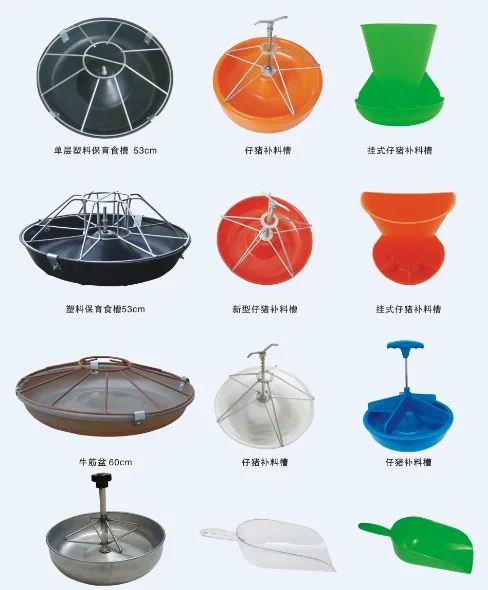Effective Design Strategies for Pig Farrowing Pens to Enhance Welfare and Productivity
Nov . 06, 2024 12:08 Back to list
Effective Design Strategies for Pig Farrowing Pens to Enhance Welfare and Productivity
The Importance of Pig Farrowing Pens in Modern Swine Production
Farrowing pens are essential components in modern pig farming, playing a crucial role in the welfare of sows and their piglets. These specialized pens are designed to provide a safe, comfortable, and hygienic environment for sows during the farrowing process, which typically occurs when a sow is about to give birth. Understanding the importance of farrowing pens is vital for improving not only the productivity of the farming operation but also the overall health and well-being of the animals.
Design Considerations
The design of farrowing pens significantly impacts the success of the birthing process and the early life of piglets. A well-constructed farrowing pen should include several key features adequate space for the sow to lie down comfortably, a separate area for the piglets, and barriers to prevent accidental crushing of piglets during and after birth. The pen should allow the sow to engage in natural behaviors and provide the piglets with a safe environment to nurse and grow.
Typically, a farrowing pen is equipped with a slatted floor that promotes good drainage and easy cleaning. This design minimizes the risk of infections and creates a hygienic environment, crucial for the health of both the sow and her piglets. In addition, the use of heat mats or lamps is common to ensure that piglets maintain an optimal temperature, as they are particularly vulnerable in the first few days of life.
Welfare and Management
One of the primary benefits of using farrowing pens is the enhancement of animal welfare. The stress levels of sows can be significantly reduced through the provision of an appropriate environment. A comfortable sow is more likely to have a successful farrowing experience, which translates to healthier piglets. Research indicates that sows housed in farrowing pens with adequate space and environmental enrichment show reduced signs of stress, leading to lower instances of stillbirths and better survival rates of piglets.
pig farrowing pens

Moreover, effective management practices in farrowing operations contribute to the overall efficiency of pig farming. By utilizing farrowing pens, farmers can closely monitor the health of the sow and her litter, ensuring immediate intervention if issues arise during the birthing process. Additionally, the design of these pens allows for easy access for caretakers, facilitating necessary tasks such as feeding, cleaning, and health checks without causing stress to the animals.
Economic Considerations
Investing in high-quality farrowing pens may require a significant initial outlay, but the long-term benefits far outweigh the costs. Improved animal welfare leads to increased productivity, with sows in well-designed farrowing systems typically yielding larger and healthier litters. This can result in higher market returns and improved overall profitability for the farm. Furthermore, well-managed farrowing operations can reduce veterinary costs associated with infections and other health problems that arise in poorly designed environments.
Future Innovations
As the swine industry continues to evolve, innovations in farrowing pen design and technology are emerging. These advancements may include automated systems for monitoring the health of sows and piglets, temperature control mechanisms, and improved sanitation solutions. By integrating new technologies, farmers can enhance their operational efficiencies, reduce labor costs, and further improve animal welfare.
Conclusion
In conclusion, farrowing pens are integral to the success of modern pig farming, providing a critical environment for sows to give birth and care for their young. Their design impacts animal welfare, productivity, and economic viability, making them a fundamental component of swine production. As the industry moves forward, the continued innovation of farrowing pen systems will play a pivotal role in ensuring the health and well-being of pigs while supporting the sustainability and profitability of farming operations. Embracing these advancements is essential for farmers who wish to remain competitive and responsible stewards of their animals and the environment.
-
Automatic Feeding Line System Pan Feeder Nipple Drinker|Anping County Yize Metal Products Co., Ltd.
NewsJul.29,2025
-
Automatic Feeding Line System-Pan Feeder Nipple Drinker|Anping County Yize Metal Products Co., Ltd.
NewsJul.29,2025
-
Automatic Feeding Line System - Pan Feeder Nipple Drinker|Broiler Farming Equipment
NewsJul.29,2025
-
Automatic Feeding Line System - Anping Yize | Efficiency&Durability
NewsJul.29,2025
-
Automatic Feeding Line System - Anping Yize|Poultry Efficiency&Durability
NewsJul.29,2025
-
Automatic Feeding Line System-Anping County Yize Metal Products Co., Ltd.|Durable PP Material&Easy Maintenance
NewsJul.29,2025






